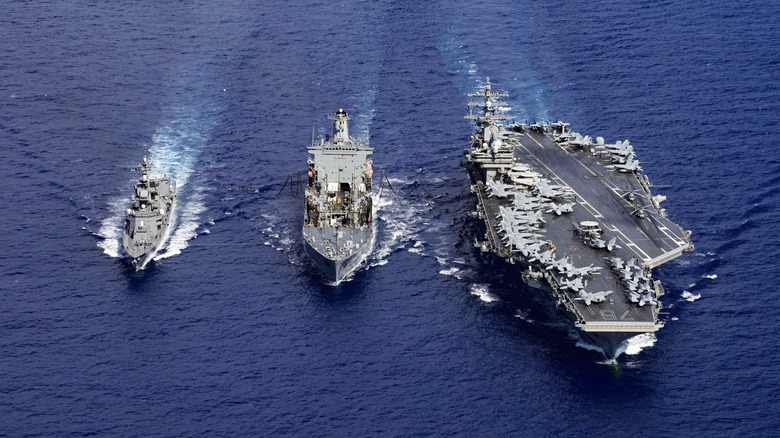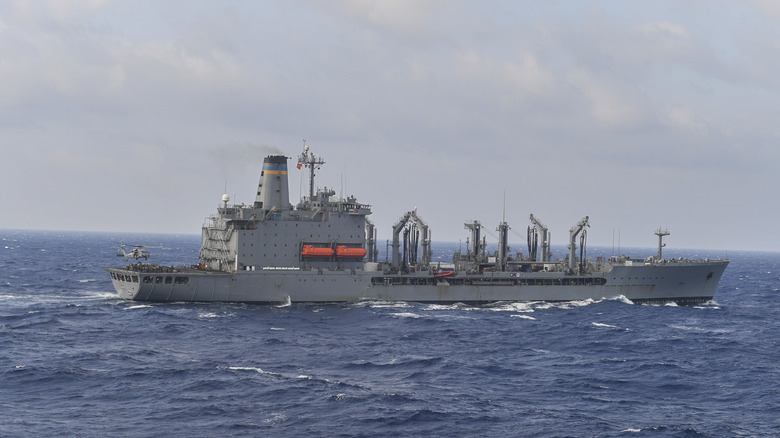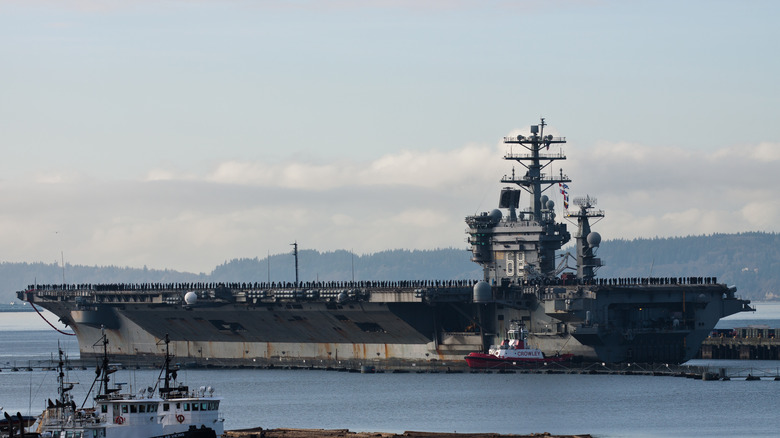These Iconic US Navy Ships Are Set To Be Decommissioned In 2026
The United States Navy, arguably the most powerful sea-based military force to ever exist, owes a lot of its power to the large fleet of ships in its arsenal. As of January 2025, it was operating more than 296 warships under its flag, with many of them considered to be the best in the world in terms of capability, technology, and global reach. One of the ways in which the U.S. Navy has maintained its technological and qualitative edge over its main adversaries is by constantly inducting new vessels into the fleet, while phasing out older ones.
Given that every ship that the U.S. Navy builds, upgrades, or retires is funded through congressional appropriations, details about the Navy's long-term vessel induction and decommissioning plans are a matter of public knowledge. Each year, the U.S. Navy retires several ships, and 2026 is no exception. One of the most important ships likely to be decommissioned in 2026 is the USS Nimitz. As the oldest American aircraft carrier still in service, it is among the best-known ships of its kind among the general populace. Also due for decommissioning in 2026 are two Los Angeles-class nuclear submarines, which were once among the most active components of the Navy's undersea fleet. Let's take a closer look at some of these soon to be retired U.S. Navy vessels.
U.S Navy ships confirmed for inactivation in 2026
The U.S. Navy's vessel decommissioning plans for 2026 have been detailed in the FY 2026 Inactivation Schedule released on September 12, 2025. Per this list, the ships slated to be inactivated include two Los Angeles-class attack submarines: the USS Newport News (SSN 750) and the USS Alexandria (SSN-757). These are the only two battle-focused vessels that find their way onto the list, in addition to six ships with other purposes.
The USNS John Ericsson (T-AO-194) and USNS Pecos (T-AO-197), two Henry J. Kaiser-class oiler ships that store massive amounts of fuel to replenish other ships, will also be decommissioned. Additionally, the USNS Pomeroy (T-AKR-316), the USNS Watkins (T-AKR-315), and the USNS Red Cloud (T-AKR-313) will be retired. These are all Watson-class RORO ships, which are primarily designed to carry vehicles that can be rolled on and off (RORO). These large vessels form a crucial part of the U.S. Navy's logistics capability thanks to their capacity to carry up to 58 tanks, 48 tracked vehicles, and 900 trucks.
The last vessel on the official inactivation schedule is the USNS VADM K. R. Wheeler (T-AG-5001). This is a small offshore petroleum distribution system vessel that is designed to deliver fuel from ship to shore. Its capabilities are especially useful in situations where traditional port infrastructure, like pipelines or jetties, is not available.
Will the USS Nimitz be decommissioned in 2026?
Beginning as early as 2023, and continuing through most of 2024 and 2025, multiple media outlets reported that the U.S. Navy was beginning the process of decommissioning the USS Nimitz (CVN 68), one of America's largest aircraft carriers. The original plan called for it to be retired in 2025, but the date was postponed to May 2026. However, the USS Nimitz isn't on the newest inactivation schedule issued by the U.S. Navy. There is always a possibility that geopolitical events could delay the retirement of an aircraft carrier, which makes it hard to determine whether the May 2026 decommissioning process will go as planned.
That said, despite the Nimitz not being listed in the Navy's formal FY 2026 inactivation memo, what we do know is that the ship's fate is sealed. In March 2025, the U.S. Navy confirmed that the USS Nimitz, along with its 3,000 crew members, would change homeports from Washington to Norfolk as part of what was then described as its final deployment. The aircraft carrier will then begin the long process of deactivation, a contract for which was awarded to Huntington Ingalls Industries in 2024.
The deactivation process involves defueling the ship's nuclear reactors and gradually stripping the vessel of its parts. Weapons and ammunition still on board the vessel will be removed and used by other ships. The nuclear reactors that powered the ship for 50 years will also need to be safely disposed of, and they are expected to be shipped to a facility owned by the Department of Energy.


